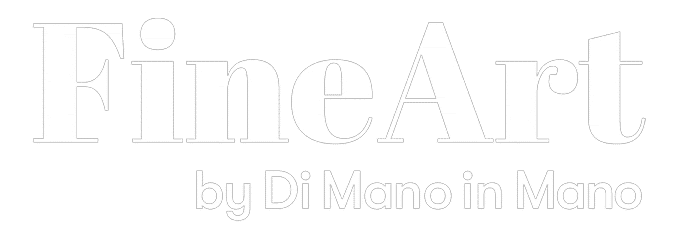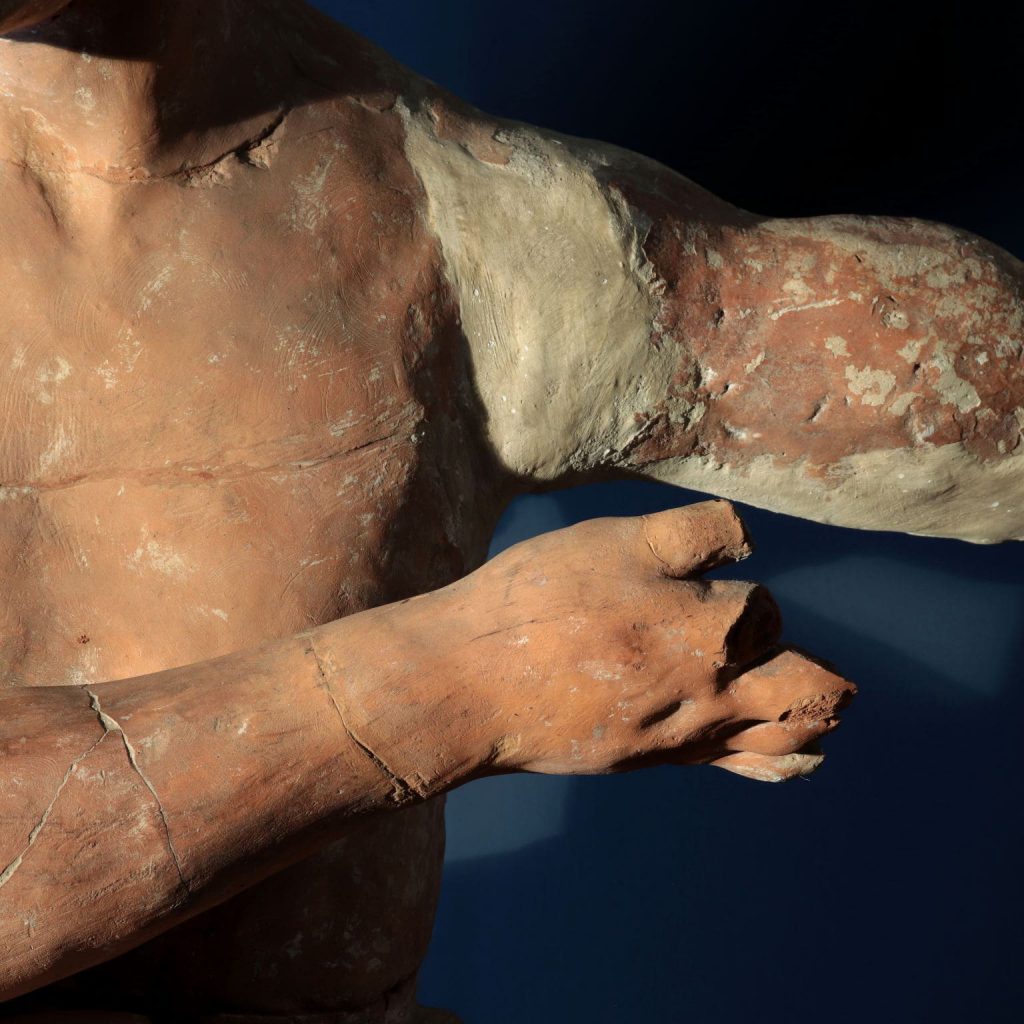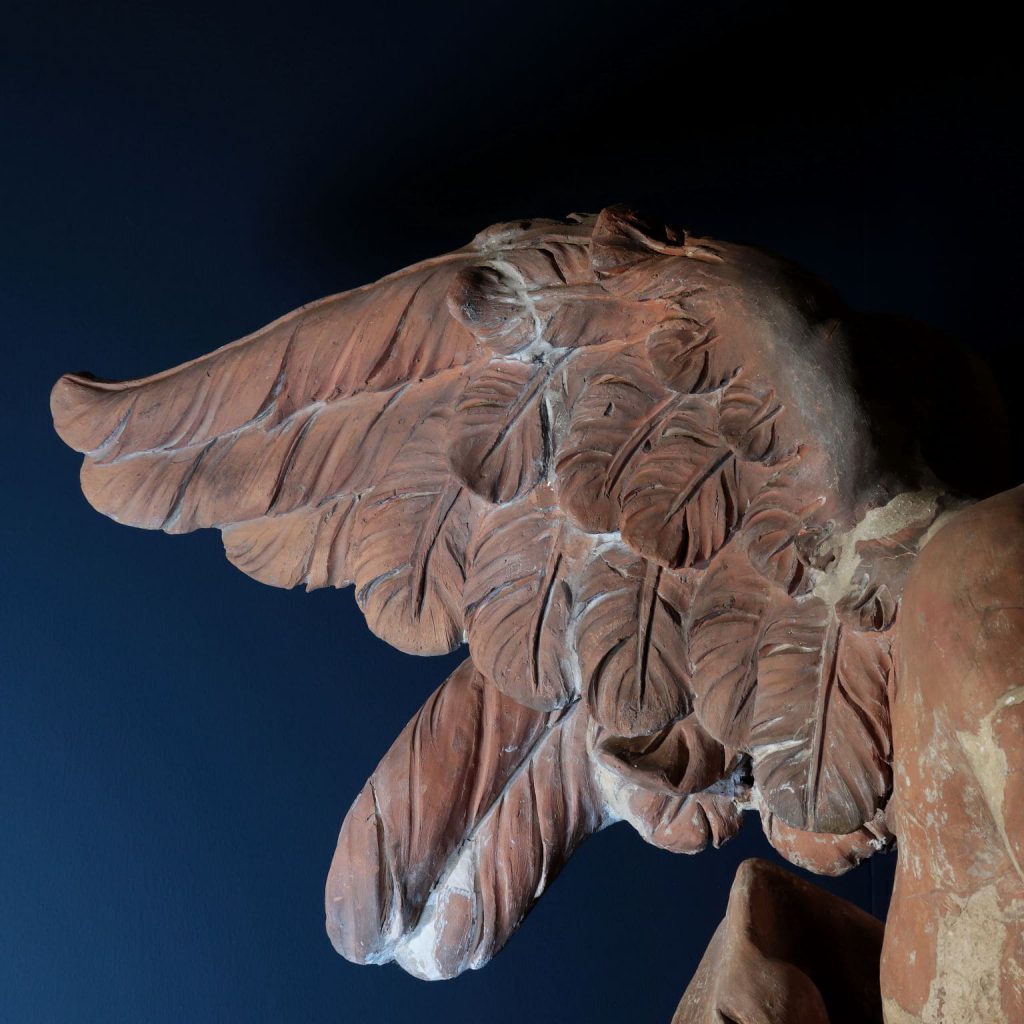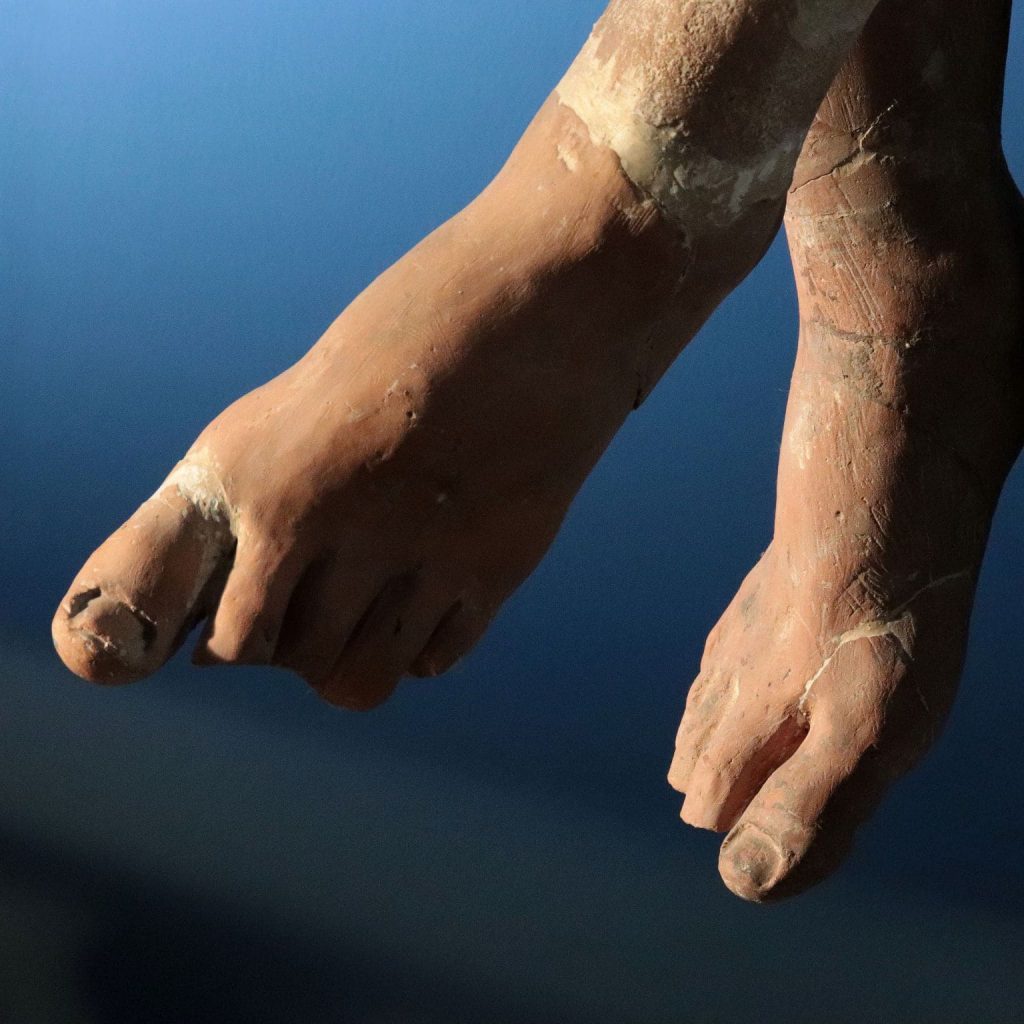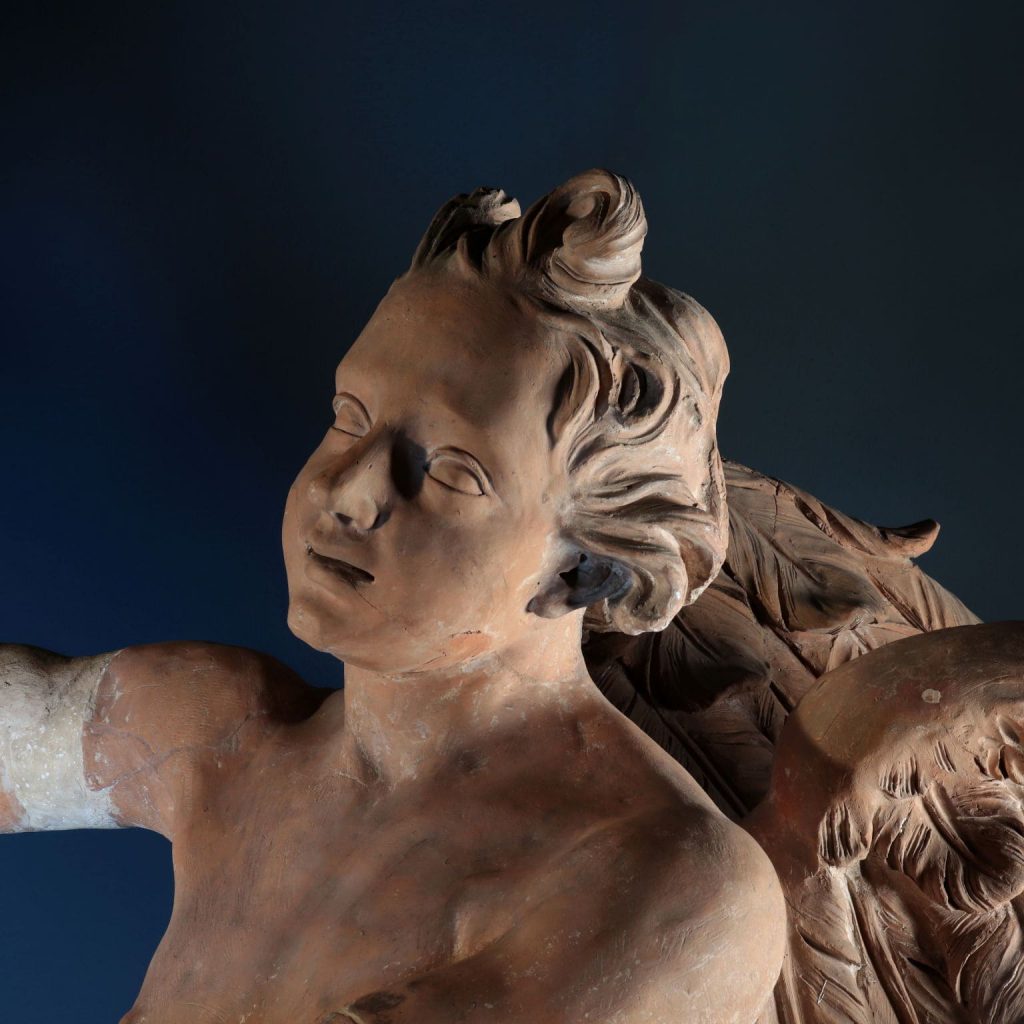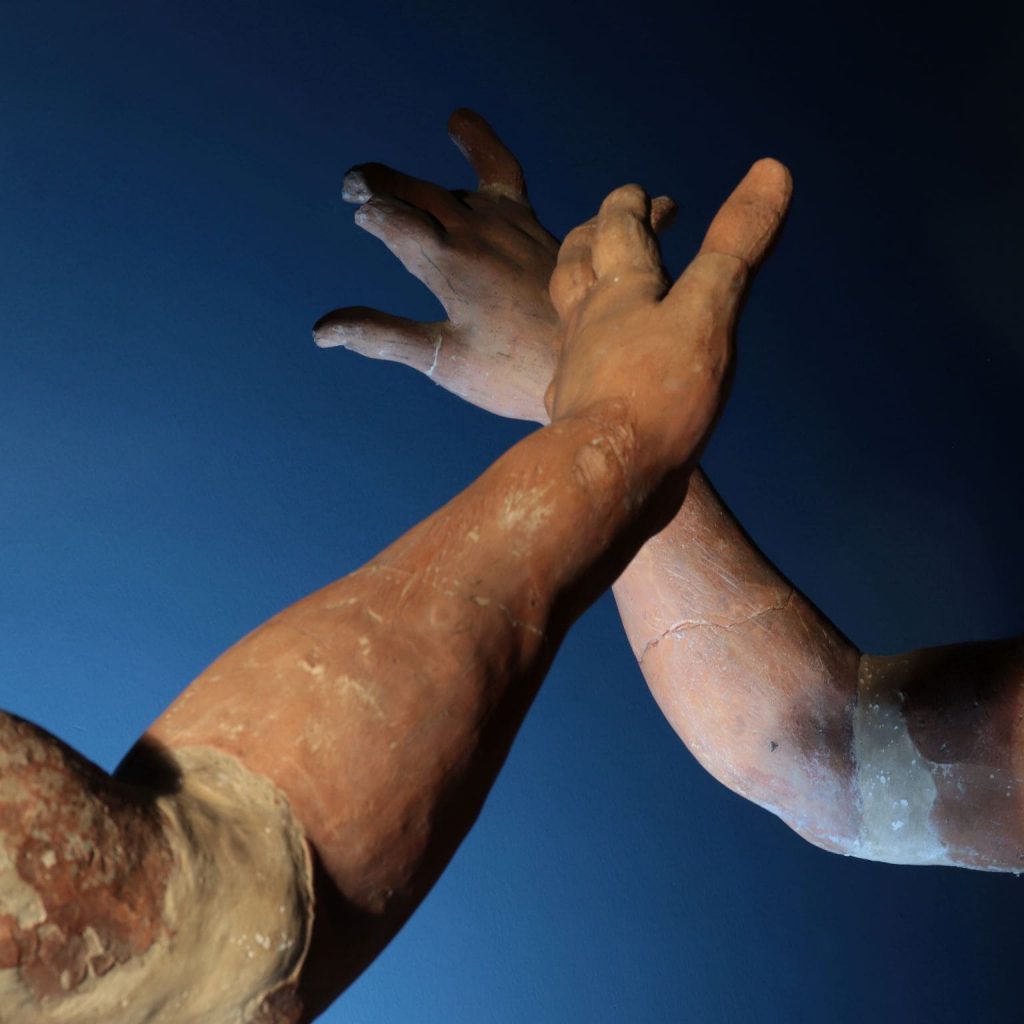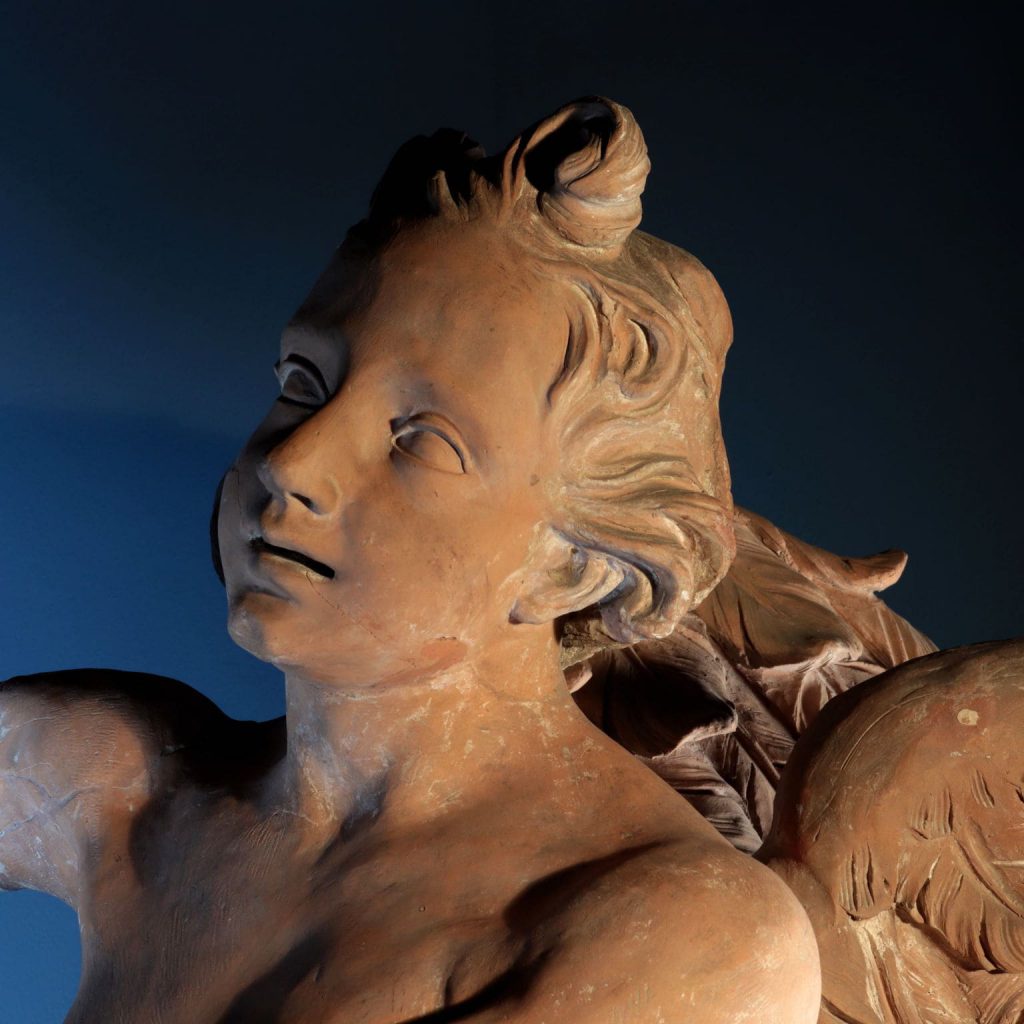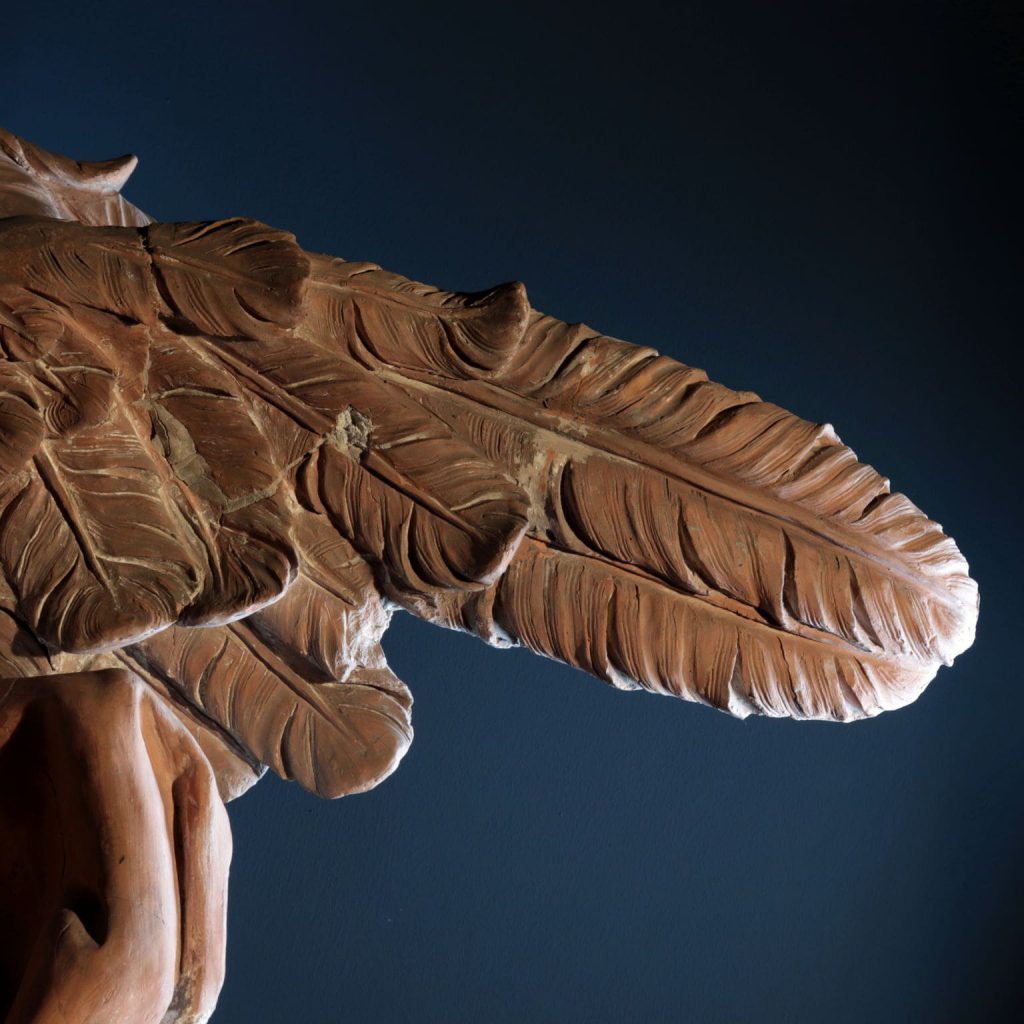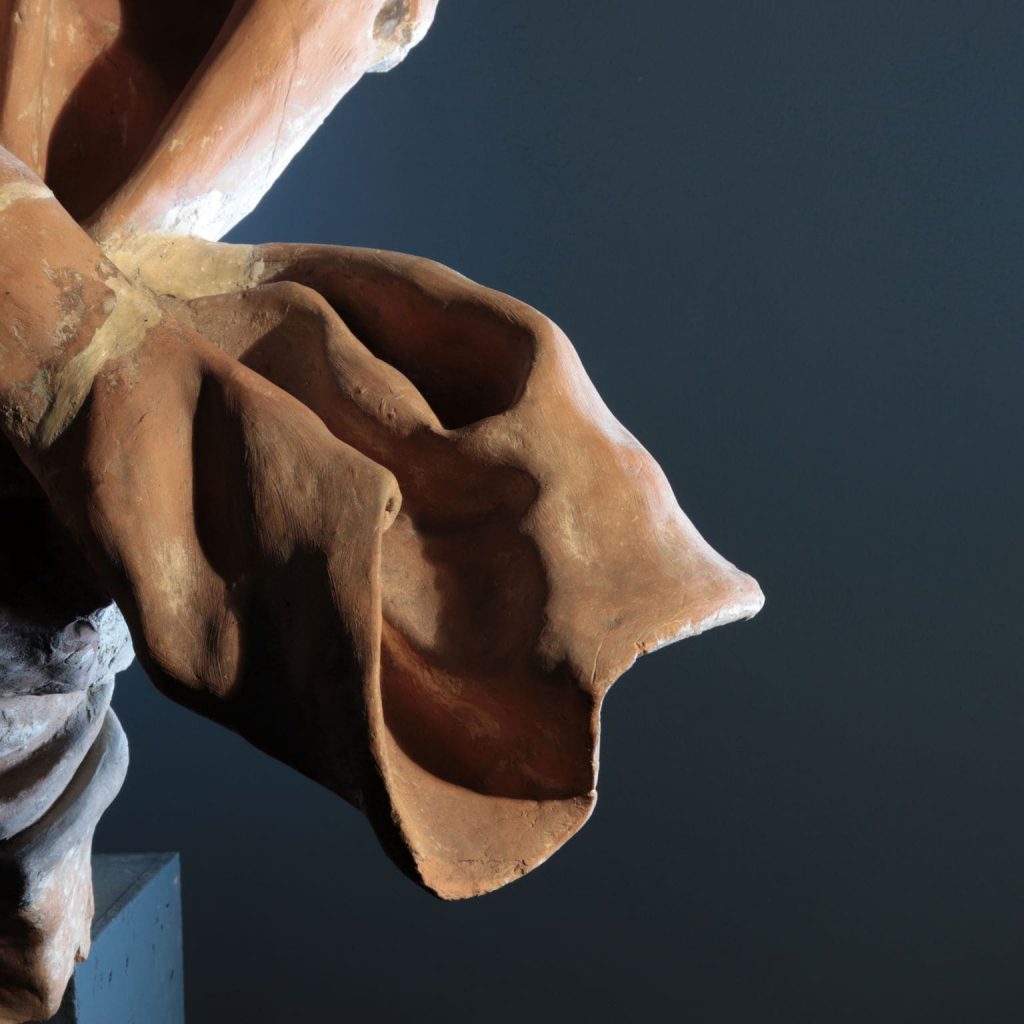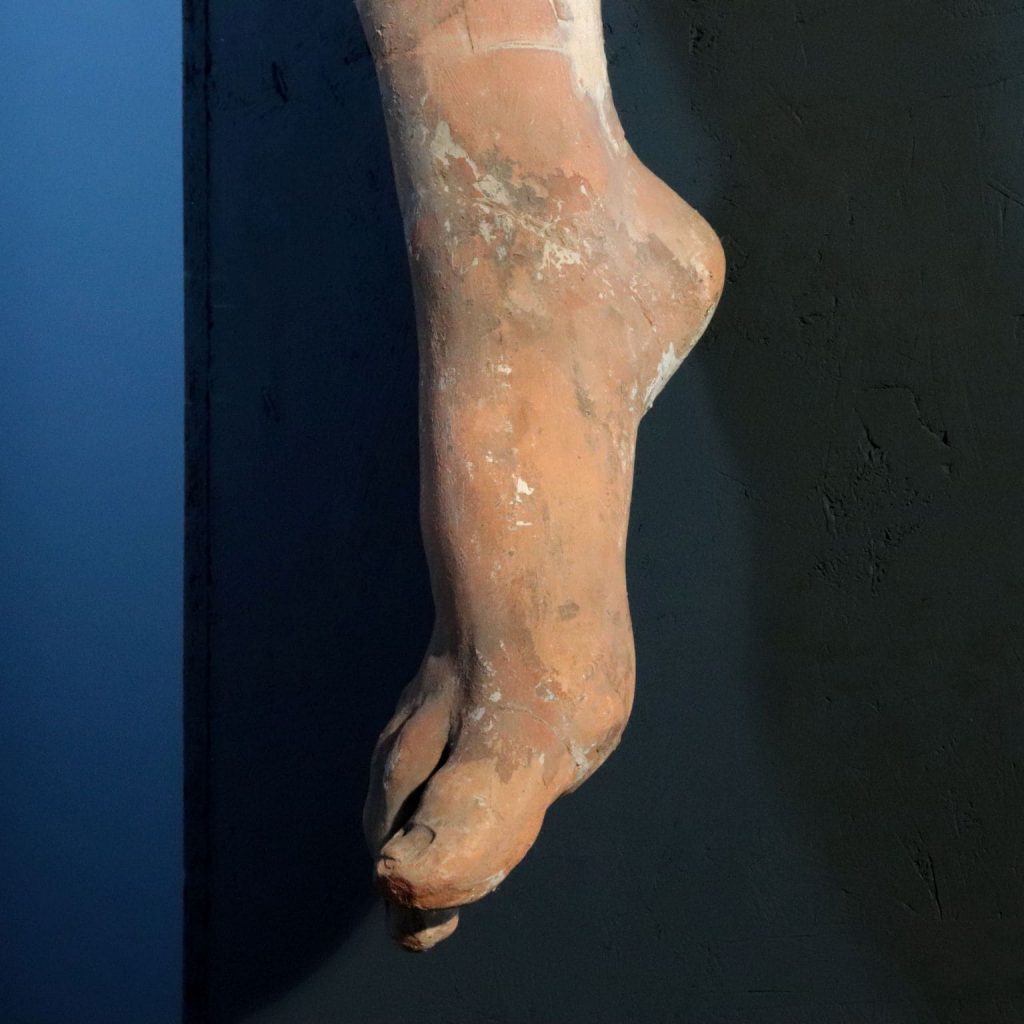Pair of terracotta sculptures
Description:
Pair of terracotta sculptures, representing two angels in pendant. The two figures, in a mirrored position, are represented with great verisimilitude and attention to the characterization of the faces, represented with a considerable physiognomic typing and expressive rendering, despite the dawning eyes. The two figures are represented in the act of flying, the torso twisted with respect to the axis of the legs and the arms stretched to the side. The bodies are covered with drapery with a plastic and flowing rendering, in order to create further dynamism. Present several gaps and cracks, made up for in stucco during past restorations. Some shortcomings can be found, especially in the most fragile and exposed areas, such as the phalanges of the hands and feet, affected by some old makeover.
Dimensions : 148 x 110 x 95 cm ( 58,2 x 43,3 x 37,4 in )
CODE: ARTART0000098
Historical-critical analysis:
As indicated in the report by Dr. Giuseppe Sava, the pair of sculptures is a 1: 1 preparatory sketch for an articulated plastic decoration that could be found on an altar pediment. Their specular position and the arms extended forward reveal the function of curtain holder, or coat of arms or cartouche or another type of sacred attribute. The scholar brings the production of this sculptural couple back to the Milan area. In particular, thanks to the possible stylistic comparisons, it is possible to trace them back to the activity of the sculptors active in the Fabbrica del Duomo and in particular to that of Carlo Francesco Mellone.
Although they can be placed in a more advanced phase of his artistic career, our pair of angels find parallels with the allegorical figures created to be placed on the boundary wall of Palazzo Terni de Gregori Bondenti in Crema. In particular, the figure of Abundance is characterized by that particular sentimental declination that distinguishes its production, including the Angels under consideration here. A great attention to the lively expressive rendering, to the sinuous movements and to the jagged draperies, now an expression of the fully eighteenth-century Rococo, can be found, as well as in ours, also in the Putti that originally decorated Palazzo Annoni in Milan.
Strict comparisons can still be made in the somatic features of the Angel on the right with the allegory of Peace (1731), belonging to the figures alluding to the virtues of Saint Gaudentius, made on the occasion of the plastic decoration of the scurolo of the Novara basilica of the same name. This was among the most important and fundamental commissions received by ours outside the Milan area and which made him rise among the leading personalities in the artistic production of those years. If we can hypothesize an original project that envisaged greater activity for the Novara construction site, unfortunately this was never completed: in 1735 our sculptor lost his sight and the construction site, abruptly interrupted, resumed only several years later, under the guidance by Carlo Beretta, author of a new bronze iconographic program.
The hypothesis not to be discarded is that in our Angels they could be terracotta to be used for the bronze casting of sculptures to be placed above the scurolo of San Gaudenzio. Although there is no precise documentation that can confirm this hypothesis, further proof could be given by the fact that Beretta, once it took over the construction site, created a couple of Angels holding the coat of arms of the city of Novara.
Biography:
Carlo Francesco Mellone (Milan, 1670-before 1756) was a pupil of Carlo Simonetta, but a trip to Rome was certainly fundamental for his cultural and artistic training. He resided in the city for five years, from 1688 to 1693, the year in which he returned to Milan and was immediately active in the Fabbrica del Duomo, so much so that in 1715 he was appointed proto-statuary. The works created in this first phase, including the Santa Rosalia for the northern external side of the cathedral, in fact show a conjugation between the bombast of clear Roman influence with a sense of gracefulness which is instead a peculiar characteristic of all the sculptural production of our .
A second trip to Rome by Mellone (1717-1720) is attested, where he worked in the workshop of Camillo Rusconi, taking part in the execution of the monument of Gregory XIII in St. Peter’s, sculpting the relief in the center of the urn with the Institution of the Gregorian calendar. A key commission in our career was, as already mentioned, the one received by mandate from the Fabbriceria of the Basilica of San Gaudenzio in Novara, where he took care of the plastic decoration of the scurolo. This was one of the last construction sites in which ours participated, together with the sculptures made for the main altar of the Sanctuary of Caravaggio, before the blindness that forced him to abandon his artistic activity.
Reference bibliography:
– L. Carubelli, Aggiunte al catalogo di Carlo Francesco Mellone e di Giovanni Battista Dominione. La decorazione scultorea del palazzo Terni de’ Gregorj Bondenti a Crema, in “Arte Cristiana”, 77 (1989), pp. 115-120;
– S. Zanuso, The pair of Putti from Palazzo Annoni and Bronze Sculpture of the Seventeenth and Eighteenth Centuries in Lombardy, Milano 2013;
– S. Zanuso, Giove e Semele, in The sparkling soul of terracotta, catalogo della mostra, (Milano, Galleria Caiati & Gallo) a cura di S. Castri, Firenze 2014, pp. 38-49.
- Pair of angels, Carlo Francesco Mellone (and assistants) Milan, c. 1730

Antiques, Art and Design
FineArt is the new ambitious Di Mano in Mano project that offers an exclusive choice of antiques and design works, presenting them for their singularity and uniqueness.
